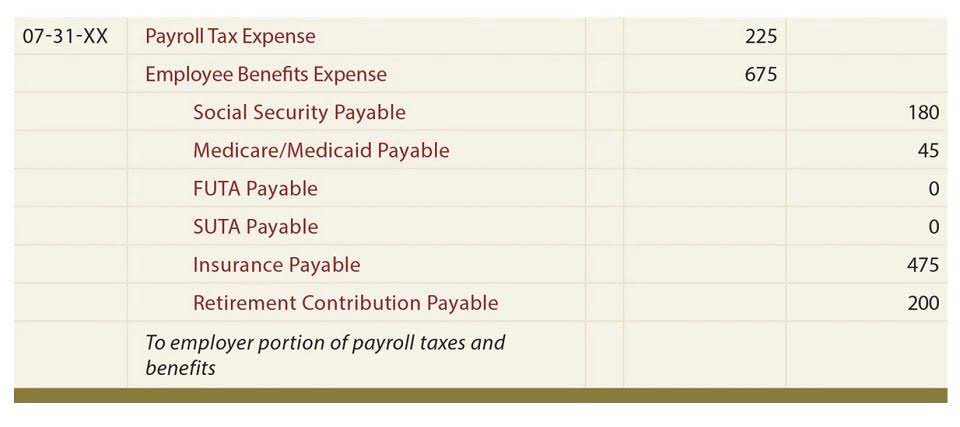
In real estate leases, the landlord often requires one or two months of rent upfront. A portion of the overall expense will be recognized equally each period over the course of the year until the prepaid expense is completely consumed. The expenses are recognized on the income statement once the value of the good or service is realized, meaning the service or good is delivered. Entities following US GAAP, like publicly traded companies, are required to use the accrual method. This is because it adheres to the matching principle, which requires recognizing revenue and expenses in the period they occur. Entities following US GAAP are required to use accrual accounting, which means recognizing revenue and expenses in the period they occur.
What is the 12 month rule for prepaid expenses?
Under the accrual method, no expense is recorded until it is incurred, so prepaid expenses are recognized over a period of time if they are to be utilized over a prolonged period, such as 12 months. Amortization allows you to spread out the costs for the use of a long-term asset over the expected period the asset will provide value. This method is used for prepaid expenses like rent, insurance, and taxes where the costs need to be scheduled to post across accounting months. The amortization schedule can be used to track the decrease in the prepaid asset account over time.
Example of accounting for prepaid insurance
Regular reconciliations ensure that the recorded prepaid expenses align with actual usage and contractual terms. This practice helps prevent overstatement of assets and ensures timely recognition of expenses, which is especially pertinent for tax reporting purposes. Regulations such as are prepaid expenses amortized IRC Section 263(a) require capitalization of certain prepaid expenses for tax purposes, which can impact tax liability and cash flow management. Prepaid expenses can be found in various business scenarios, such as prepaid rent from leases, prepaid software subscriptions, and prepaid insurance premiums. Amortization of prepaid expenses is a gradual process that reduces the prepaid amount to zero over time in correspondence to the benefits received.

Example of accounting for a prepaid subscription
In contrast, long-term prepayments, such as a multi-year lease agreement, may be recorded as non-current assets if the benefits extend beyond a year. Although being a simple concept, it is important for Certified Bookkeeper an organization to correctly account for and recognize prepaid expenses on its balance sheet. Prepaid assets typically fall in the current asset bucket and therefore impact key financial ratios. Additionally, an organization reporting under US GAAP must follow the matching principle by recognizing expenses in the period in which they are incurred. This requires proper calculation and amortization of prepaid expenditures such as insurance, software subscriptions, and leases.
The adjusting journal entry is done each month, and at the end of the year, when the prepaid expense has no future economic benefits, the prepaid expense balance would be zero. As the prepaid expense is used or consumed over time, it needs to be adjusted to reflect the actual expense incurred. This involves a debit to an expense account (an income statement account) and a credit to a prepaid expense account (a balance sheet account). Prepaid expenses are also known as prepaid assets because they represent the value of the goods or services that will be received in the future.

Amortization and Accounting
The amortization schedule has a column for the total cash payment made at the beginning of the subscription term of $2,000. In most cases, this is the correct entry to book, however, in certain transactions we are paying upfront for the right to use an asset or receive a service over a defined period of time. It is important to consider what basis of accounting an organization is operating under when assessing how to account for prepaid expenses. Entities following US GAAP and hence issuing GAAP-compliant financial statements are required to use accrual accounting. Accrual accounting adheres to the matching principle which requires recognizing revenue and expenses in the period they occur. GAAP prepaid expenses can significantly impact financial statements, particularly in the current period and subsequent retained earnings balance sheet periods.
- Accurate journal entries are essential for maintaining the integrity of financial records.
- Amortizing prepaid expenses can be a challenge for companies that rely on manual accounting processes because this leaves room for human error.
- Prepaid expenses, or Prepaid Assets as they are commonly referred to in general accounting, are recognized on the balance sheet as an asset.
- Prepaid expenses can be found in various business scenarios, such as prepaid rent from leases, prepaid software subscriptions, and prepaid insurance premiums.
- The process of reducing the prepaid expense balance and increasing the expense balance over time is called amortization of prepaid expenses or prepaid expense recognition.
- Before going in detail, let’s first understand the key definition of prepaid expenses and amortization.

These expenses are recorded as assets on the balance sheet because they have future economic benefits. Examples of prepaid expenses include rent, insurance, subscriptions, licenses, and taxes. Amortization is an accounting technique that helps you account for the consumption of a prepaid expense over a period of time. This process shifts the asset from the balance sheet to the income statement.Let’s say you pay $12,000 to lease an office space for a year.
- This means that expenses are recognized on the income statement as soon as they are incurred, not when the cash is paid.
- Prepaid expenses are expenses paid for in advance and recorded as assets before they are used or consumed.
- Prepaid accounting is the process of paying for expenses in advance before they are incurred or consumed.
- To record a prepaid expense, you’ll need to create a journal entry that reflects both a cash payment and a prepaid expense account creation.
- For example, if you purchase a $12,000 insurance policy, you would record the purchase as a debit to Prepaid Insurance (Asset) $12,000.
- By understanding the process, adhering to guidelines, and implementing best practices, you can ensure that your financial statements reflect the true financial position of your business.

Note that $1,000 is calculated by dividing the total prepaid amount ($12,000) by the number of months in the period (12). You may want to set up an amortization table to track the decrease in the account over the policy term and to determine what the journal entries will be. When we have such schedule, each month we can record the amortization expenses in one transaction together. This way, it will save your time as you will not need to record one by one as per the example above. It’s calculated by dividing these liquid assets by current liabilities, providing a more conservative view of a company’s liquidity. They can include expenses like rent, insurance, and utility deposits, which are paid in advance but not yet used.
Companies can use amortization data to optimize spending patterns, negotiate better terms with suppliers, or adjust pricing strategies to maintain a competitive advantage. Prepaid expenses should be recognized in the period they contribute to revenues, in line with the Matching Principle. This principle ensures that expenses are matched with the revenues they help to generate. This systematic allocation helps businesses maintain consistent financial statements and make more informed decisions based on accurate period-specific expenses. Accrual accounting adheres to the matching principle, which means an entity only recognizes an expense on the income statement once the good or service purchased has been delivered or used.

